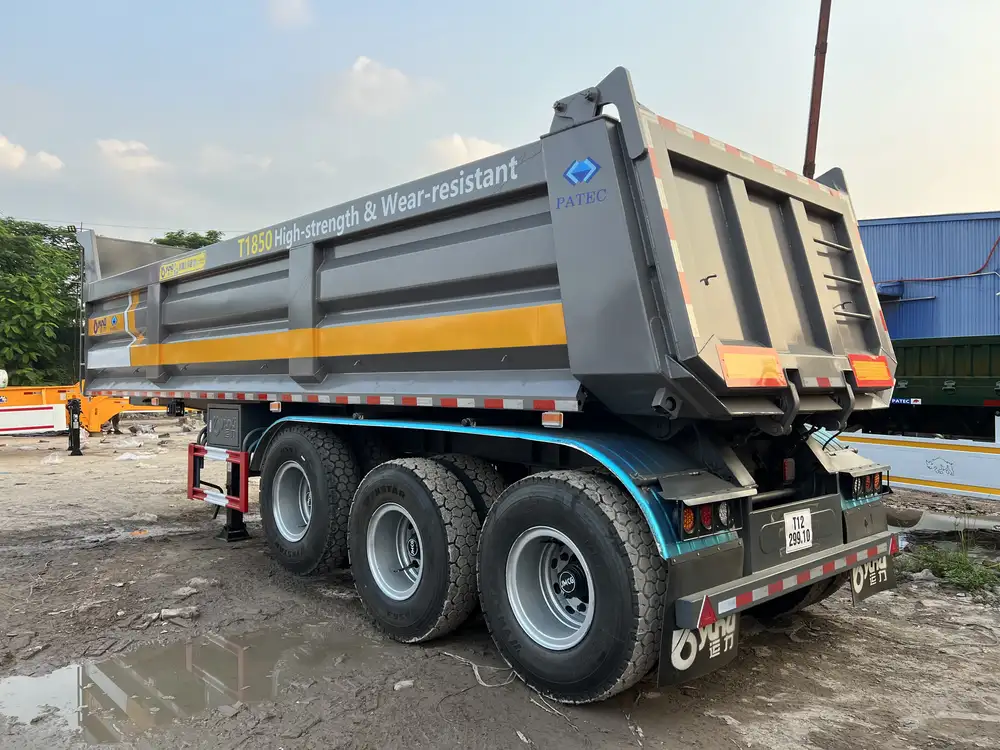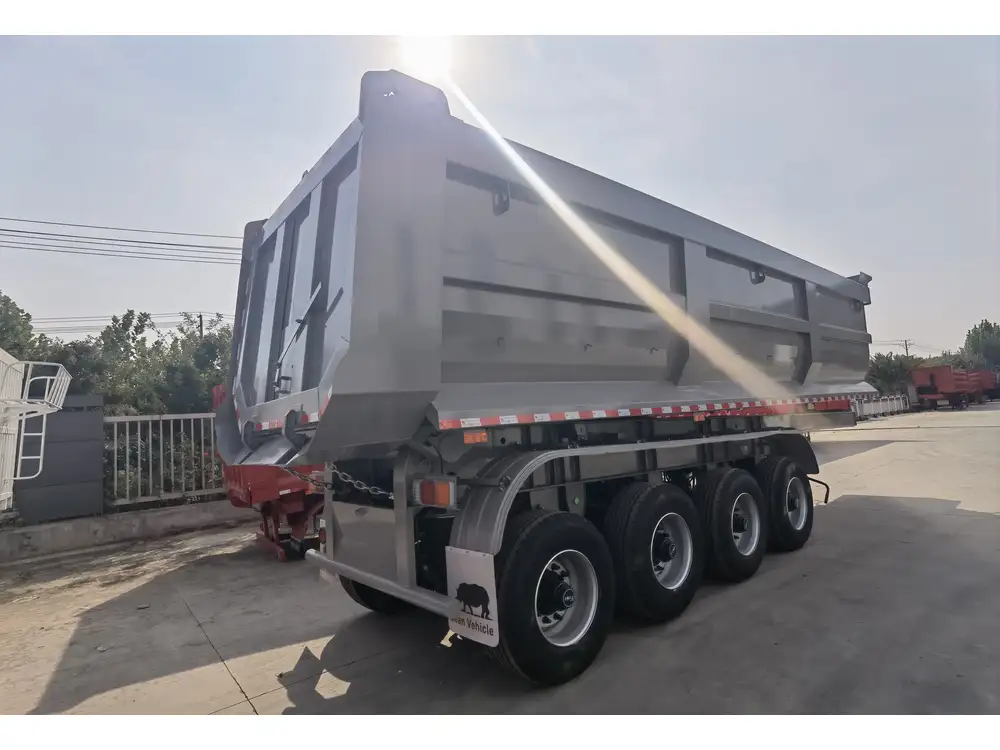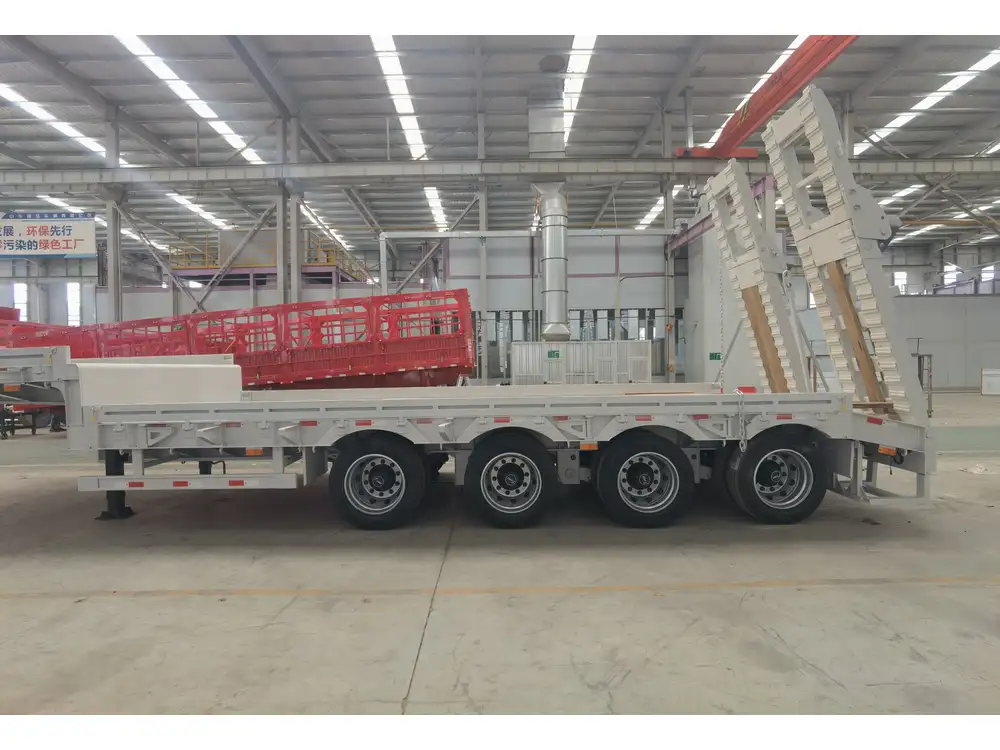When navigating the intricate world of hauling and logistics, operators consistently seek solutions that maximize efficiency while adhering to safety standards. A common question arises in this context: Can a loader dump yard in a 4×6 trailer? As manufacturers of semi-trailers, we delve into this query, dissecting its implications, practical applications, and the nuances of making it work optimally.
Understanding Loader and Dump Yard Dynamics
The Role of a Loader
A loader serves as a vital piece of construction machinery designed to lift, scoop, and transport materials such as dirt, gravel, and other aggregates. Loaders come in various types, including frontend loaders and skid steer loaders. The capacities and functionalities differ, but the primary goal remains the same: efficiently move materials from one point to another.

What is a Dump Yard?
A dump yard refers to a designated area where materials, typically waste or excess fill, are deposited. This could include construction debris, landscaping material, or other types of refuse that require removal from a job site. The goal is to streamline operations and ensure that the worksite is kept organized and efficient.
Key Features of a Dump Yard
- Accessibility: Easy access for heavy machinery and trailers.
- Space: Sufficient area to accommodate expected waste volumes.
- Safety: Proper management to prevent hazards related to debris and materials.
Analyzing the Capacity of a 4×6 Trailer

Dimensions and Specifications
A 4×6 trailer measures four feet wide and six feet long, typically offering a modest load capacity ideal for smaller hauling tasks. However, understanding its limitations and capabilities is crucial to determine its effectiveness for dumping applications.
| Feature | Specification |
|---|---|
| Length | 6 feet |
| Width | 4 feet |
| Height (sides) | Typically 12-24 inches |
| Load Capacity | Approximately 1,500 – 2,500 lbs |
Evaluating Weight and Volume Constraints
Understanding the weight limitations is essential when pairing a loader with a 4×6 trailer for efficient dumping.
- Weight Limitations: Exceeding the maximum load can lead to accidents, damage to the trailer, or inefficiencies in transport.
- Volume Constraints: Depending on the type of material (e.g., soil vs. gravel), the weight-bearing capacity might be reached before the physical volume fills the trailer.
Common Load Types
Loaders can transport a variety of materials. When considering a 4×6 trailer, it’s essential to focus on the types of loads that can be feasibly transported:
- Soil: High-density, compact loads ideal for filling holes or leveling terrain.
- Gravel: Generally lighter, but bulkier, as it takes up more space.
- Construction Debris: Mixed loads can vary in weight and volume, requiring careful consideration of capacity.

Assessing Feasibility: Loader Dumping into a 4×6 Trailer
Operational Considerations
To effectively utilize a 4×6 trailer for dumping yard materials, several operational factors must be taken into account:
- Loader Type: The loader size and capacity directly affect how efficiently it can deposit material into the trailer.
- Trailer Stability: Ensuring that the trailer remains stable during dumping is crucial to prevent tipping over or accidents.
- Loader Positioning: Proper alignment between the loader and trailer is essential to minimize spillage and maximize the load.
Practical Application Scenarios
- Residential Landscaping: Transporting garden soil or mulch where minimal weight is involved, making a 4×6 trailer an ideal option.
- Small Construction Sites: Efficiently removing debris without the overhead of larger trailers, focusing on small loads.

Example Scenario
Imagine a landscaping crew working on a small garden plot. Using a skid steer loader, they can scoop soil and deposit it into the 4×6 trailer effectively. Given that the soil is relatively light, the crew can repeat this process multiple times without exceeding capacity, ensuring a streamlined workflow.
Potential Challenges
While there are advantages to using a 4×6 trailer, potential challenges must be considered:
- Limited Capacity: For larger projects, numerous trips may be necessary, leading to increased time and operational costs.
- Loader Limitations: Smaller loaders may not have the lifting capacity to deposit heavy materials efficiently, impacting productivity.
Best Practices for Loader-Dumping Mechanics
Achieving efficiency when loading materials into a 4×6 trailer calls for strategic planning and execution. Here are some best practices:

Pre-Operational Checks
Conducting thorough pre-operational checks on both the loader and trailer is vital:
- Inspect Load Capacity: Always verify the weights involved before loading.
- Check Attachments: Ensure that loader attachments are secure and appropriate for the expected load type.
Effective Loading Techniques
Utilizing optimal loading techniques can enhance not only safety but also efficiency:
- Gradual Loading: Load materials gradually and evenly across the trailer to maintain stability.
- Use a Spotter: Employ a crew member to guide the loader operator during the dumping process, ensuring proper alignment and minimizing spillage.
Continuous Training
Regular training for operators ensures familiarity with equipment and safety protocols increases overall efficiency, leading to better outcomes in the field.

Enhancing Dump Yard Efficiency: Advanced Tips
To optimize your dump yard operations further, consider these advanced tips:
Trailer Maintenance
Regular maintenance of the trailer extends its operational life and enhances safety. Key areas include:
- Check Tires and Brakes: Ensure optimal grip and stopping power.
- Inspect for Damage: Regularly assess the trailer for signs of wear, particularly after heavy loads.
Optimizing Trailer Utilization
To maximize output from a 4×6 trailer:
- Plan Routes: Identify the most efficient routes to reduce travel time.
- Schedule Efficient Loading: Coordinate loading times to ensure minimal downtime between trips.

Conclusion: Can Loader Dump Yard in a 4×6 Trailer?
In summation, yes, a loader can effectively dump yard materials into a 4×6 trailer under the right conditions. Careful consideration of capacity and operational practices ensures safety and efficiency. With the right equipment, protocols, and systematic approaches, leveraging a 4×6 trailer for loader applications can drive productivity gains on the job site.
By understanding the intricacies of hauling with a loader and the limitations of a smaller trailer, operators can make informed decisions that enhance operational workflows. With diligence in training, maintenance, and techniques, your organization can achieve a harmonious balance between equipment capability and project demands.
Final Insights for Users
As you explore the potential of using a loader to dump yard materials in a 4×6 trailer, consider integrating technology, such as GPS tracking for trailers or load weight sensors for loaders. These enhancements can lead to smarter logistical decisions, thereby maximizing both productivity and profitability in your operations.
This article serves as a comprehensive guide to addressing your query regarding the use of loaders and 4×6 trailers for dumping yard materials, combining detailed analysis with actionable insights for immediate application.



